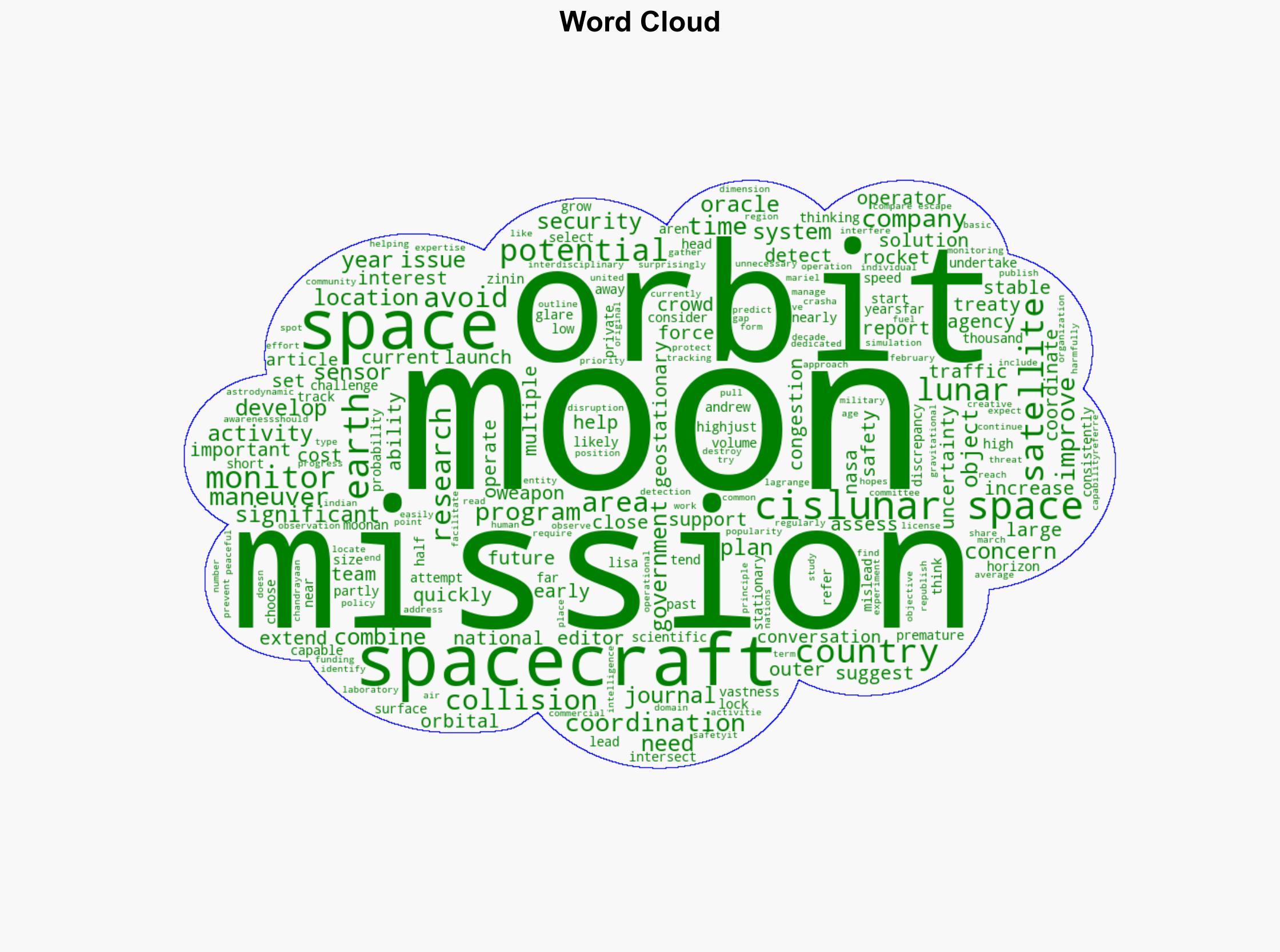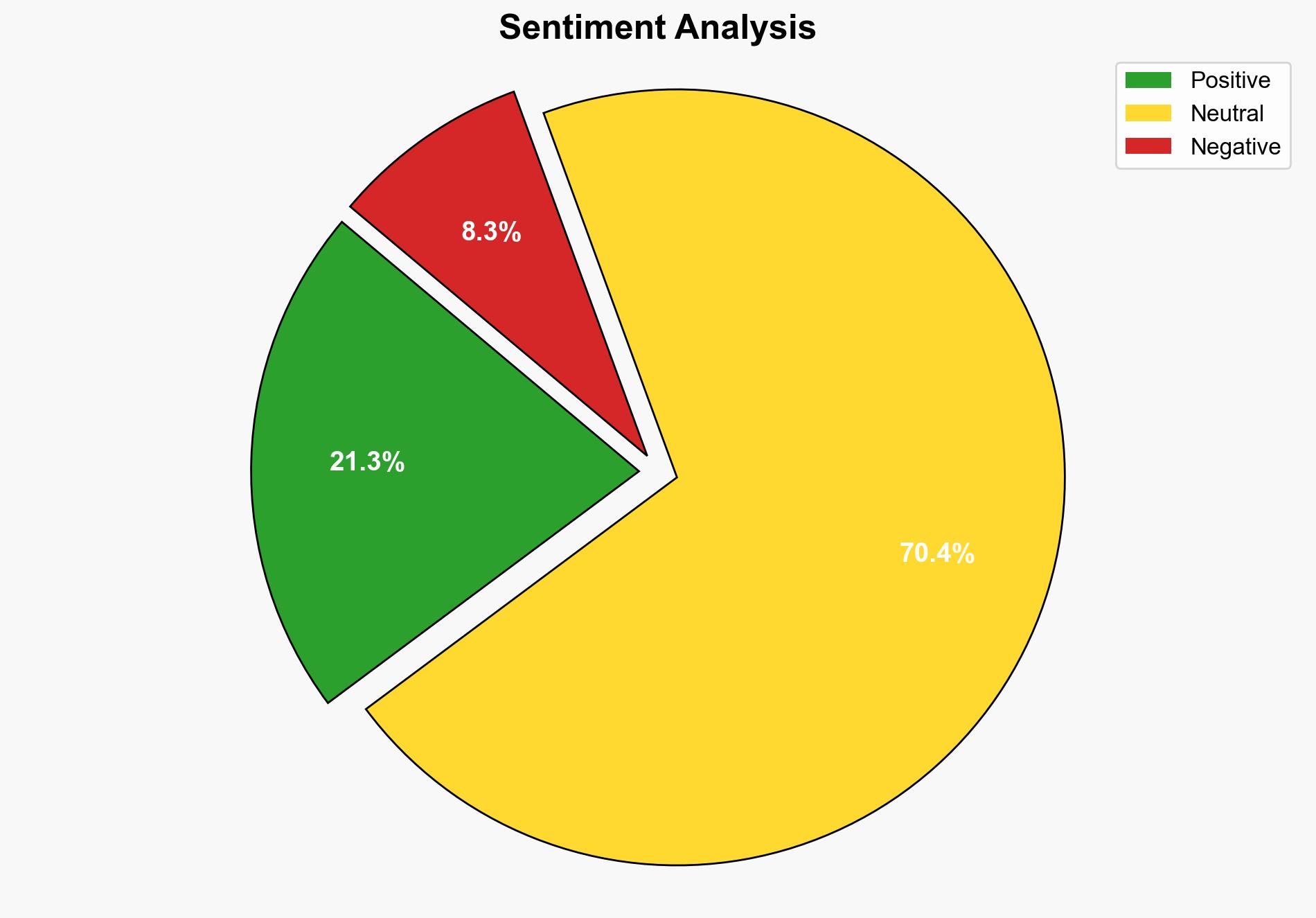With more moon missions on the horizon avoiding crowding and collisions will be a growing challenge – Phys.Org
Published on: 2025-10-30
Intelligence Report: With more moon missions on the horizon avoiding crowding and collisions will be a growing challenge – Phys.Org
1. BLUF (Bottom Line Up Front)
The increasing number of lunar missions poses a significant risk of congestion and potential collisions in cislunar space. The hypothesis that international coordination and improved monitoring systems are essential to mitigate these risks is better supported. Confidence level: Moderate. Recommended action includes enhancing cislunar space monitoring capabilities and fostering international cooperation to establish traffic management protocols.
2. Competing Hypotheses
Hypothesis 1: The growing number of lunar missions will lead to significant congestion and collision risks, necessitating immediate international coordination and enhanced monitoring systems.
Hypothesis 2: The vastness of cislunar space and the current low density of missions mean that collision risks are overstated, and existing monitoring capabilities are sufficient for the near future.
3. Key Assumptions and Red Flags
Hypothesis 1 Assumptions: Assumes that the number of missions will increase rapidly and that current monitoring systems are inadequate. Relies on the assumption that international cooperation can be achieved quickly.
Hypothesis 2 Assumptions: Assumes that the spatial vastness of cislunar space will naturally prevent congestion. Assumes current monitoring capabilities are sufficient and underestimates the potential for rapid mission growth.
Red Flags: Lack of comprehensive data on the number of planned missions and the capabilities of existing monitoring systems. Potential bias towards underestimating the speed of technological and mission growth.
4. Implications and Strategic Risks
The potential for increased congestion in cislunar space could lead to significant strategic risks, including collisions that damage expensive assets, geopolitical tensions over space traffic management, and the militarization of space as countries seek to protect their interests. The economic impact of disrupted missions could be substantial, affecting both private and governmental stakeholders.
5. Recommendations and Outlook
- Enhance cislunar space monitoring capabilities through initiatives like the Oracle program to ensure comprehensive tracking of all objects.
- Facilitate international dialogue to establish standardized protocols for space traffic management and collision avoidance.
- Scenario Projections:
- Best Case: Successful international cooperation leads to effective traffic management, minimizing collision risks.
- Worst Case: Lack of coordination results in collisions and geopolitical tensions, potentially escalating to militarization of space.
- Most Likely: Incremental improvements in monitoring and coordination reduce risks but do not eliminate them entirely.
6. Key Individuals and Entities
Lisa Lock, Andrew Zinin, Indian Space Research Organization, NASA, Air Force Research Laboratory.
7. Thematic Tags
national security threats, space traffic management, international cooperation, cislunar space monitoring





